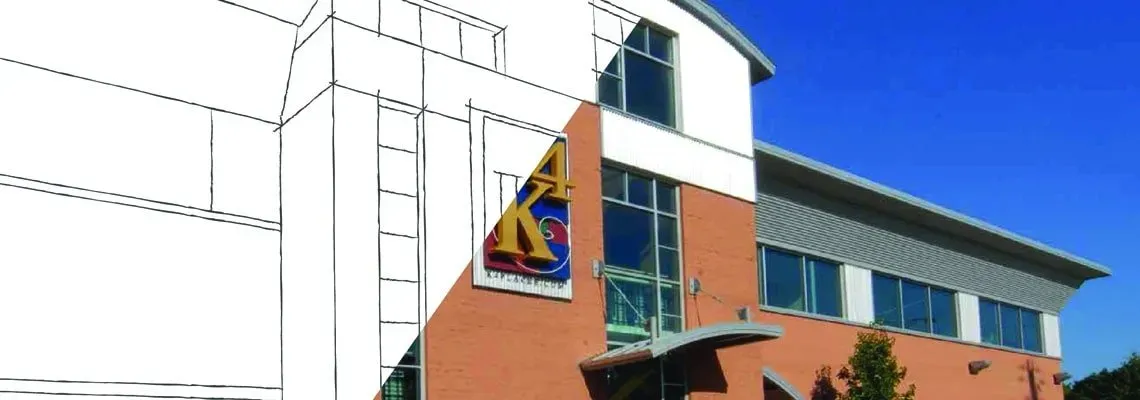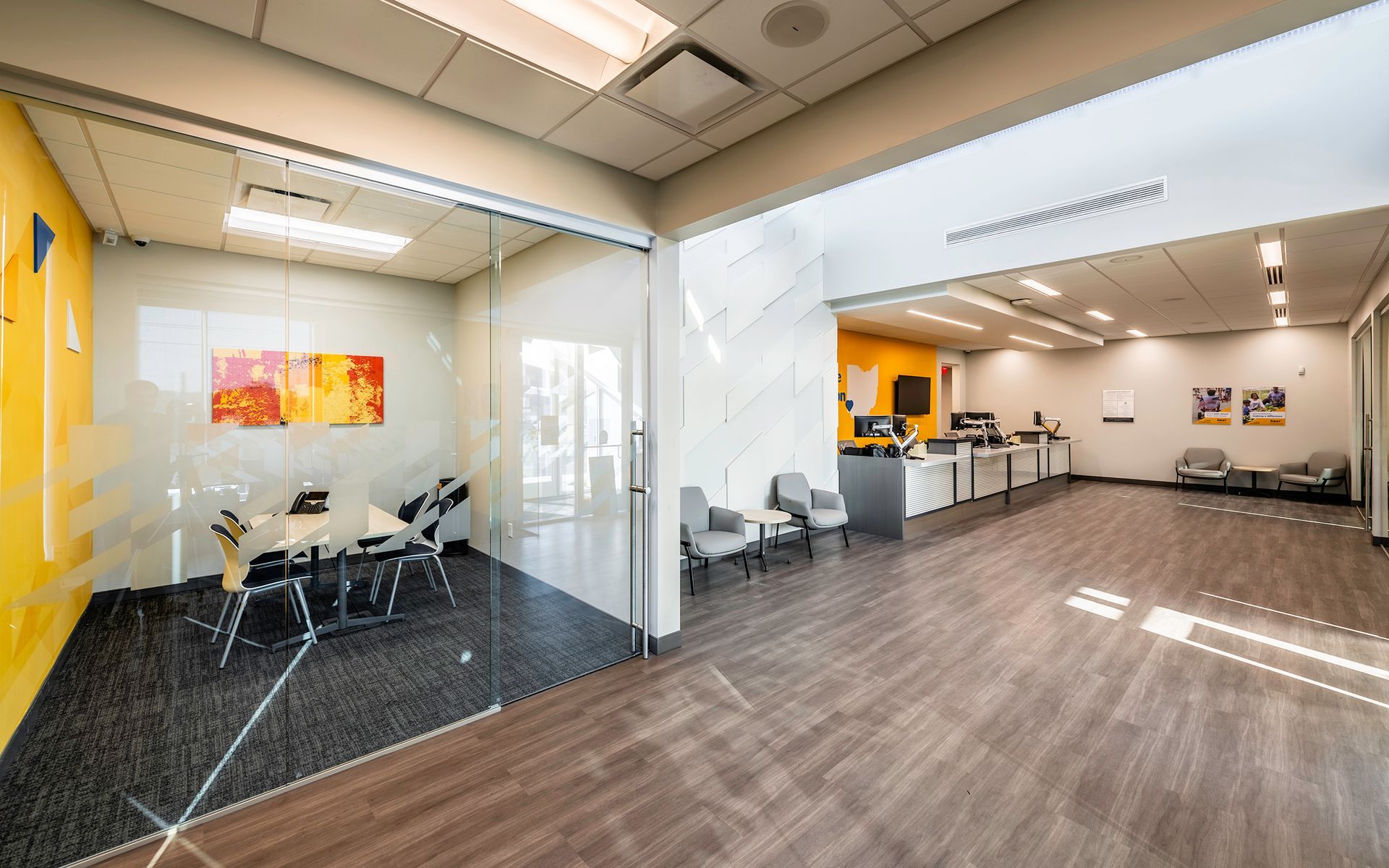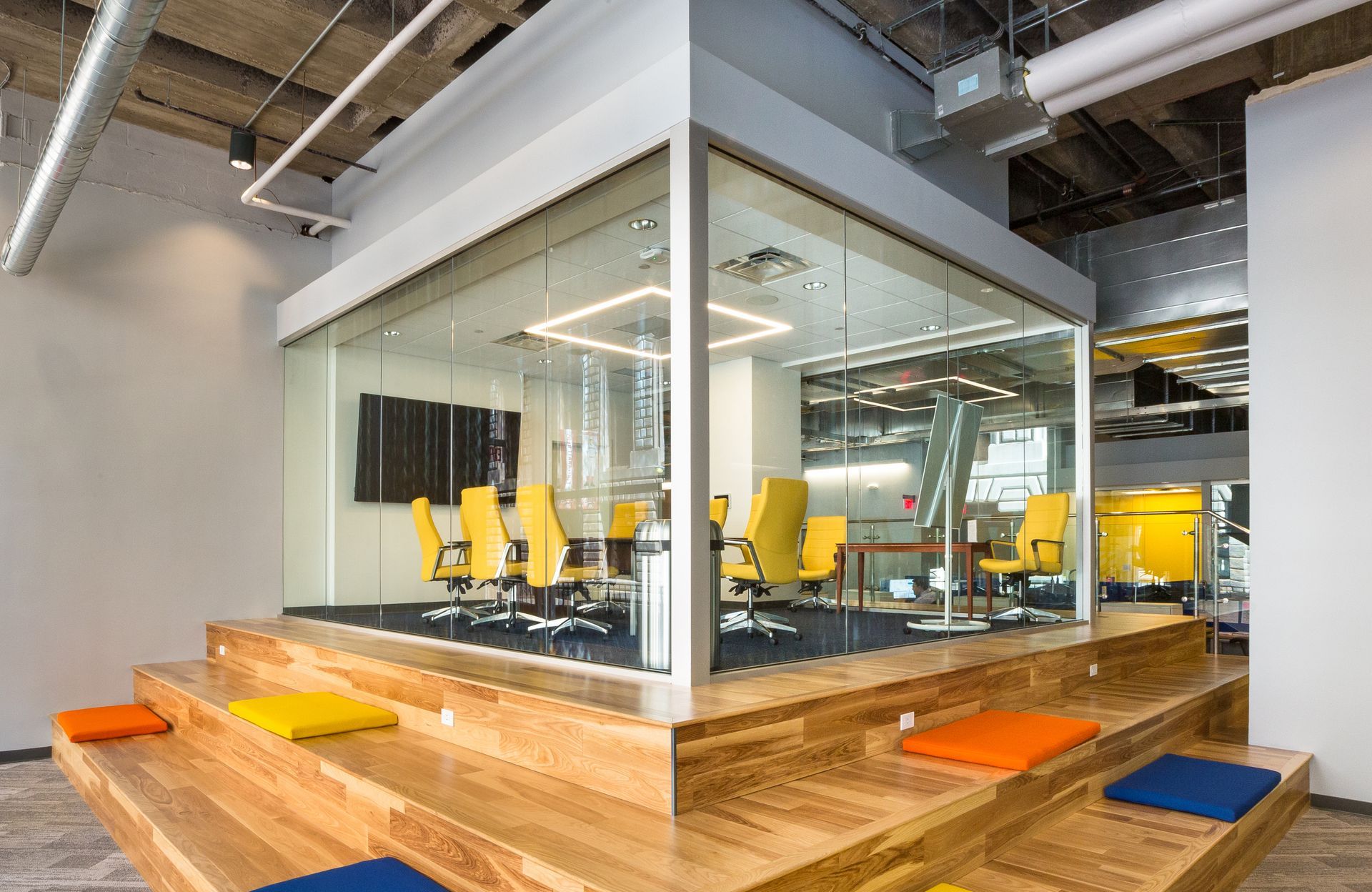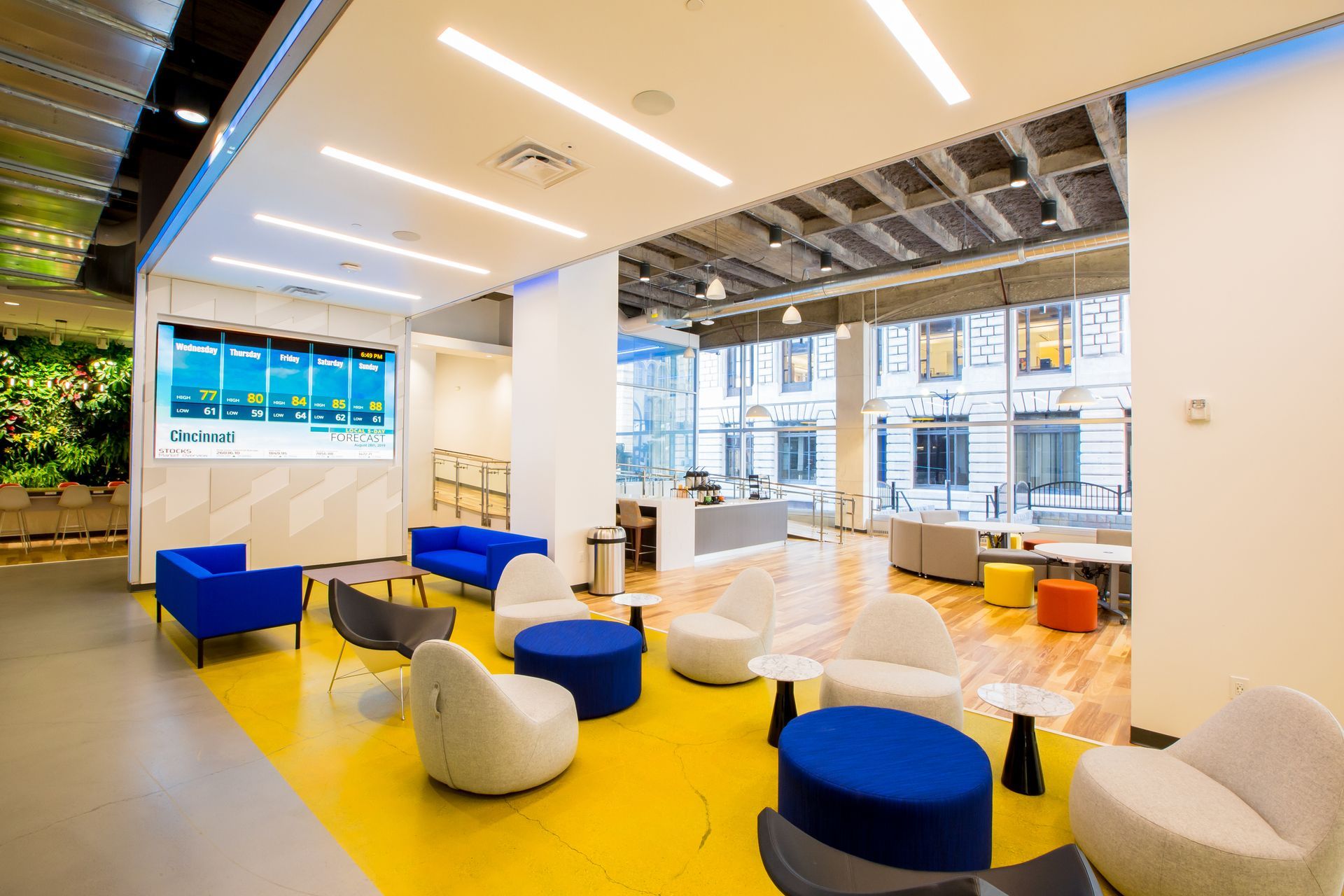By Jeff Klump,
President of the K4 Family of Companies, K4 Architecture + Design
Menu
Follow us on:

For decades, small town business districts across America have featured a strong physical presence from a local bank perspective. Near the courthouse or city hall, these buildings are often identified by their traditional columns and prominent facades of brick or stone. Not only do these structures help establish the fabric of the streetscape; they often contribute to defining the social framework of the residing individuals and neighborhoods, supporting the hopes and dreams of generations.
Community banks need to continue to reinforce their presence and values to those individuals and businesses in the geographic areas they serve. Making your bank’s physical appearance memorable, builds brand awareness and offers an opportunity to reinforce the benefits of banking locally which includes working with trusted friends and neighbors. Many community banks are exploring ways to create community space by revitalizing main offices and branch experiences while positioning themselves as a valuable and integral local resource.
At First Federal Community Bank they say, “investing in our community isn’t just a slogan – it’s the way we do business.” With this philosophy in mind, FFCB decided to design and build their new Corporate Headquarters and Education Center featuring space that could be used by any local organization in need. FFCB challenged the K4 Team to create a community room and event area, accommodating up to 100 people for both bank and public use. The intent was to establish a new space within the facility that could be used anytime--day or night, yet not interfere with the day-to-day operations of the bank’s corporate headquarters. The facility was designed with separate entrances on both the front and back of the building, providing convenient access to parking and public restrooms. Located directly adjacent to the employee break/lunchroom, the community room is separated by a fully functional glass garage door, offering flexibility and service to staff and patrons while utilizing the larger meeting space.
First Federal Community Bank President Trent Troyer says, “When we were planning our facility, we wanted to devote significant meeting space for multiple purposes. Our Financial Education Center has been a tremendous advantage for our bank during our first year in our new building. We have held many diverse events that include an Economic Forecast Luncheon, Annual Shareholders Meeting, Financial Peace University classes, monthly Lunch & Learn speakers, Kiwanis Club, Rotary Club, Chamber of Commerce Board Meetings, employee wellness fair, Tuscarawas County Economic Development Corporation Board Meetings, Leadership Tuscarawas classes, Retirement Planning workshops, and many other events and meetings. The Center has full audio video capability and the ability to set up for 70-100 people. It has served us very well and significantly raised our civic profile within our community.”
Richwood Bank’s goals for the conversion of the former Carnegie Library into a new downtown Bellefontaine branch were to maintain the historic character of the original library building but transform the remaining space into open, community meeting areas. The balance of the building in the rear addition space allowed room for Richwood Bank’s signature destination branch concept and hybrid banking/retail model. Continuing Richwood Bank’s commitment to serving and celebrating the needs of the community throughout their facilities, they introduced the Richwood Coffee concept with open seating areas and community rooms for customer and public use, available during normal banking hours.
Richwood Bank President, Chad Hoffman notes, “What surprised me when we started this service in multiple branches was the connection to the non-profit and municipal organizations in the communities we serve. Our rooms are used regularly by organizations like the United Way, the County Sheriff’s Office, the American Red Cross and many others.” Hoffman adds, “We believe bringing people into the branch for something other than a transaction leverages the bank’s largest competitive advantage, physical presence. To get the chance to meet and have conversations with members of organizations that come in for a meeting is another opportunity to earn a banking relationship! If they have a great experience in our meeting rooms and take advantage of Richwood Coffee along with our engaging team members, they might just want to become a customer of the bank.”
Community banks pride themselves on being local, says Doug Berlon, Director of Distribution and Optimization for First Financial Bank. “And to us, this goes far beyond just being accessible and knowledgeable bankers and advisors. It means being friends, leaders, and neighbors who live in, are involved in, and make decisions that positively impact the communities they serve.”
First Financial Bank takes their civic responsibility very seriously, uncovering the need for affordable, convenient, and professional space for local small businesses and nonprofits to thrive. Attempting to fill the void for lack of public meeting space in the area, First Financial Bank explored building flexible space to support organizations from one to 100 or more individuals. They sought state-of-the-art amenities built in an approachable and simple way. It was important that First Financial Bank grant access flexibility for the community to work with varying individual needs, allowing usage 365 days a year from 7 am – 11 pm. They also wanted to create a warm, but professional environment conducive to innovation and community growth in multiple branch locations, as well as a collaboration space accessible to the public in downtown Cincinnati.
The community room models portrayed above are at the forefront of what seems to be a larger, emerging trend in bank branch design. They illustrate the changing role of the branch in American cities today. In this digital age, with transactions at the touch of a finger, there is a great debate over the role of the branch. New branch design has placed more emphasis on spaces for people to connect rather than to conduct transactions. As their civic roles become broader; financial institutions must adapt to the needs of the diverse, technologically trained population and redefine their roles within the community while maintaining a creative, welcoming space that still upholds the values of human connection, social responsibility, and financial literacy.
With many community banks in operation over the course of the century, physical branches aren’t going anywhere anytime soon. Many people still view the bank as a capital treasure and financial backbone of the surrounding area. With modifications to bank design, an open mind about adaptation to technology, shared spaces for communal work/workforce flexibility and social experiences, banks will continue to thrive in their respective locales as a valuable resource for many years to come.









